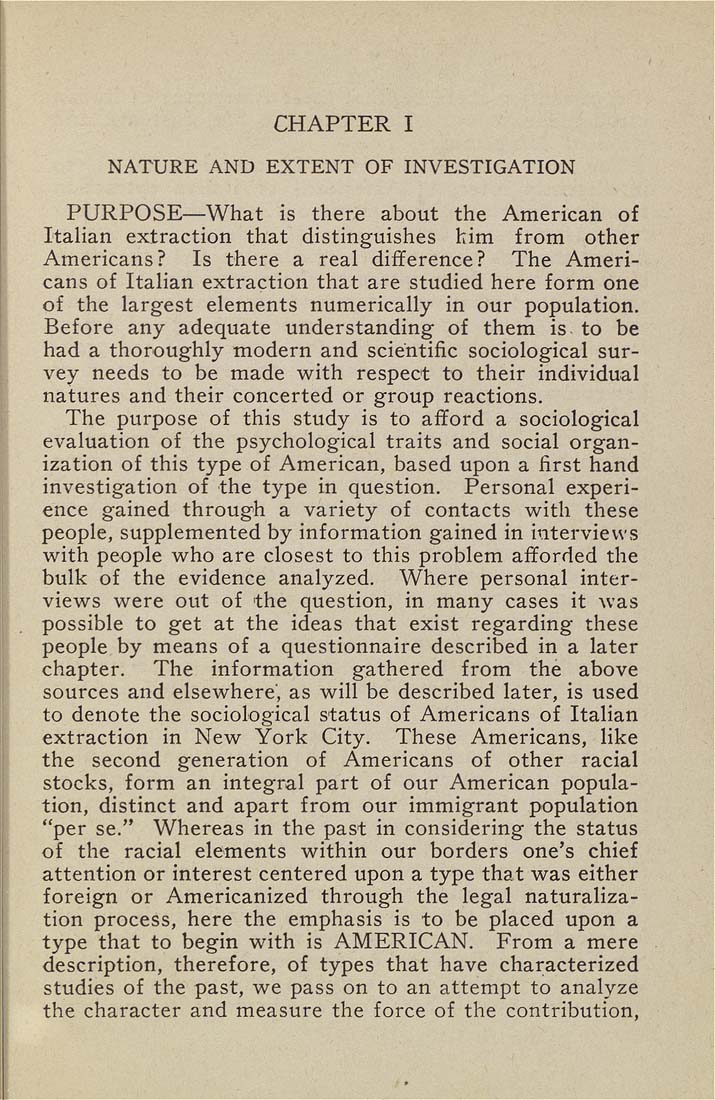CHAPTER I
NATURE AND EXTENT OF INVESTIGATION
PURPOSE—What is there about the American of
Italian extraction that distinguishes him from other
Americans? Is there a real difference? The Ameri¬
cans of Italian extraction that are studied here form one
of the largest elements numerically in our population.
Before any adequate understanding of them is to be
had a thoroughly modern and scientific sociological sur¬
vey needs to be made with respect to their individual
natures and their concerted or group reactions.
The purpose of this study is to afford a sociological
evaluation of the psychological traits and social organ¬
ization of this type of American, based upon a first hand
investigation of the type in question. Personal experi¬
ence gained through a variety of contacts with these
people, supplemented by information gained in interviews
with people who are closest to this problem afforded the
bulk of the evidence analyzed. Where personal inter¬
views were out of the question, in many cases it was
possible to get at the ideas that exist regarding these
people by means of a questionnaire described in a later
chapter. The information gathered from the above
sources and elsewhere', as will be described later, is used
to denote the sociological status of Americans of Italian
extraction in New York City. These Americans, like
the second generation of Americans of other racial
stocks, form an integral part of our American popula¬
tion, distinct and apart from our immigrant population
"per se." Whereas in the past in considering the status
of the racial elements within our borders one's chief
attention or interest centered upon a type that was either
foreign or Americanized through the legal naturaliza¬
tion process, here the emphasis is to be placed upon a
type that to begin with is AMERICAN. From a mere
description, therefore, of types that have characterized
studies of the past, we pass on to an attempt to analyze
the character and measure the force of the contribution.
|








